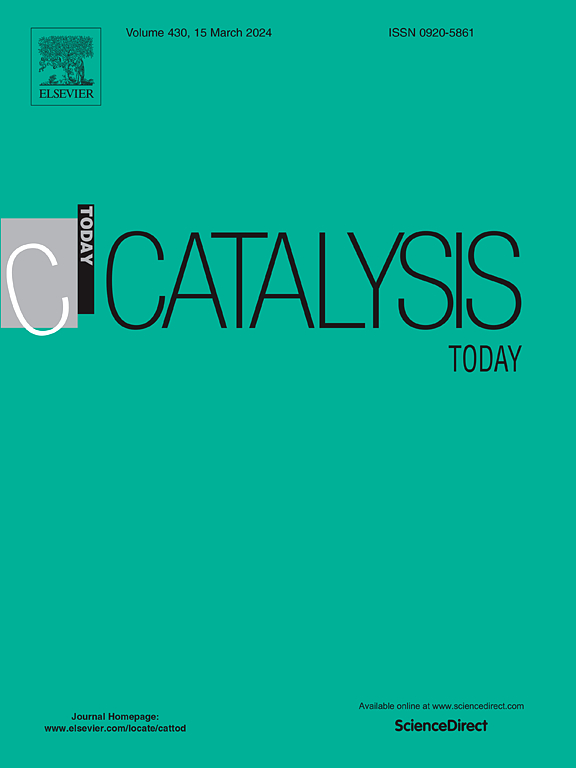Novel method for the production of Zr-doped Beta-zeolites and their use in the production of 5-(hydroxymethyl)furfural etherified biofuels
IF 5.2
2区 化学
Q1 CHEMISTRY, APPLIED
引用次数: 0
Abstract
A Beta zeolite with a high Al:Si molar ratio was dealuminated and the resulting silanol nests were functionalized with Zr to generate Lewis acid sites, for the catalytic transfer hydrogenation of the carbonyl group of 5-(hydroxymethyl)furfural (HMF), whose subsequent etherification with isopropanol led to the formation of 2,5-bis(isopropoxymethyl)furan, a potential biofuel. In this work, it was demonstrated that the parent zeolite was incapable of performing the reduction of HMF, instead directing the reaction towards the production of 5-(isopropoxymethyl)furfural (IMF) (90 % yield after 1 h at 180 ºC, with 150 mg of HMF). However, Zr-doped zeolites allowed the conversion of 5-(hydroxymethyl)furfural into its mono- and bis-etherified derivatives, and a 62 % yield of 2,5-bis(isopropoxymethyl)furan was achieved with the zeolite with a Si:Zr molar ratio of 30, after 5 h at 180 ºC. Zr loading was identified as an important factor in the catalyst deactivation due to the blocking of accessibility to the active sites required for the process at high Zr loading.
制备掺杂zr -沸石的新方法及其在5-(羟甲基)糠醛醚化生物燃料中的应用
对高Al:Si摩尔比的β沸石进行脱铝处理,得到的硅醇嵌套用Zr官能化生成Lewis酸位点,用于5-(羟甲基)糠醛(HMF)羰基的催化转移加氢,其随后与异丙醇醚化生成2,5-二(异丙氧基)呋喃,这是一种潜在的生物燃料。在这项工作中,证明了母体沸石不能进行HMF的还原,而是将反应导向生产5-(异丙氧基甲基)糠醛(IMF)(在180℃下,150 mg HMF在1 h后收率为90 %)。然而,Zr掺杂的沸石允许将5-(羟甲基)糠醛转化为其单醚化和双醚化衍生物,并且在180℃下,在Si:Zr摩尔比为30的沸石下,5 h后,2,5-二(异丙氧基)呋喃的收率为62 %。Zr负载被认为是催化剂失活的一个重要因素,因为在高Zr负载下,该过程所需的活性位点的可达性被阻断。
本文章由计算机程序翻译,如有差异,请以英文原文为准。
求助全文
约1分钟内获得全文
求助全文
来源期刊

Catalysis Today
化学-工程:化工
CiteScore
11.50
自引率
3.80%
发文量
573
审稿时长
2.9 months
期刊介绍:
Catalysis Today focuses on the rapid publication of original invited papers devoted to currently important topics in catalysis and related subjects. The journal only publishes special issues (Proposing a Catalysis Today Special Issue), each of which is supervised by Guest Editors who recruit individual papers and oversee the peer review process. Catalysis Today offers researchers in the field of catalysis in-depth overviews of topical issues.
Both fundamental and applied aspects of catalysis are covered. Subjects such as catalysis of immobilized organometallic and biocatalytic systems are welcome. Subjects related to catalysis such as experimental techniques, adsorption, process technology, synthesis, in situ characterization, computational, theoretical modeling, imaging and others are included if there is a clear relationship to catalysis.
 求助内容:
求助内容: 应助结果提醒方式:
应助结果提醒方式:


